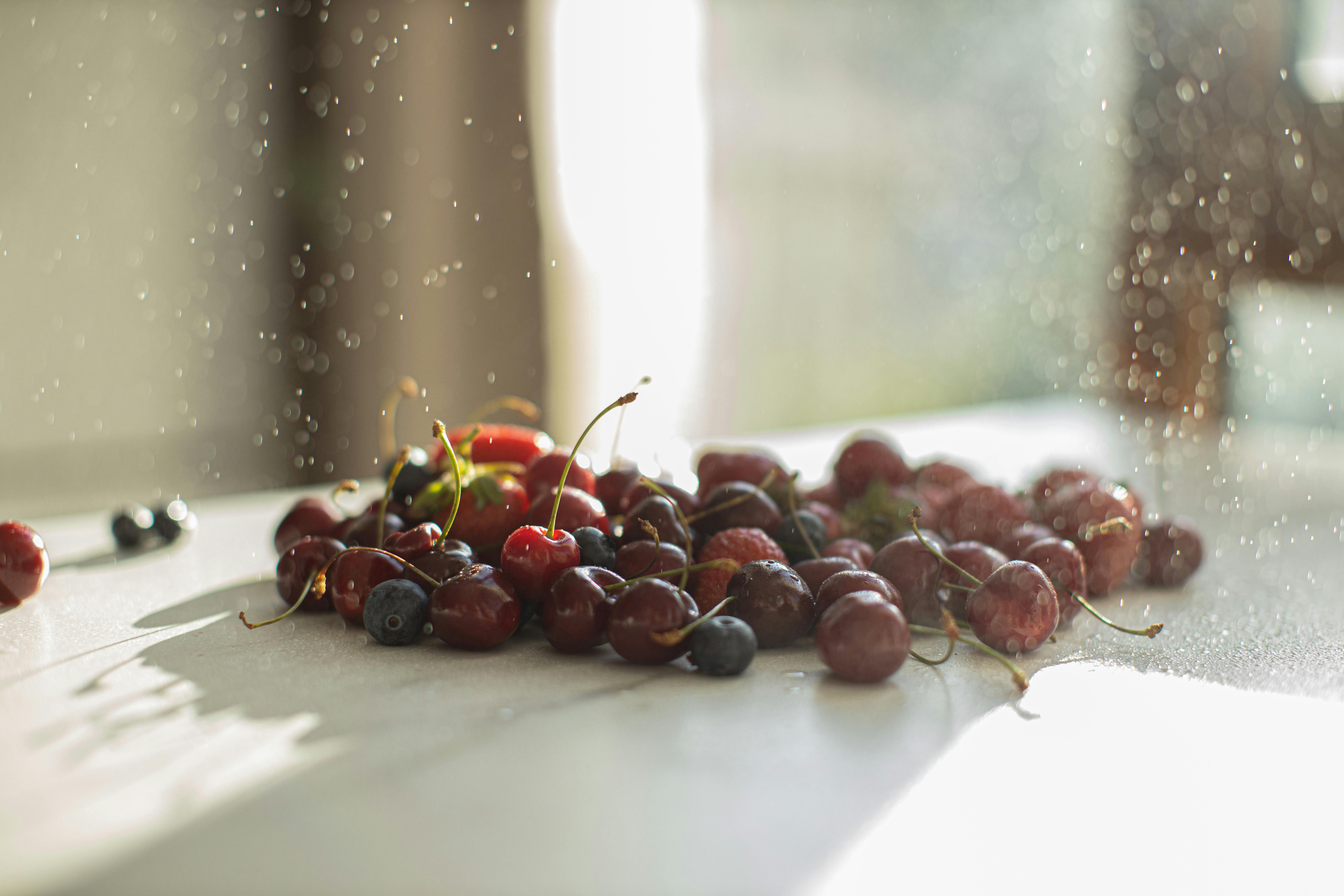Watering strawberries is an important part of caring for your strawberry plants. Proper watering is essential for maintaining healthy plants and ensuring a good crop of delicious fruit. In this article, we will provide some tips on how to water strawberries properly and effectively.Water your strawberries once a week, or whenever the soil feels dry to the touch. Strawberries need at least 1-2 inches of water per week. Water your strawberries slowly and deeply, allowing the water to soak down to their roots. This will help prevent disease and promote healthy growth. Water near the base of the plant rather than over the leaves and fruit, as this can cause disease and rot. If possible, use drip irrigation or soaker hoses to provide a slow and steady stream of water directly to the roots of your strawberry plants.
Preparing The Soil For Strawberry Planting
When preparing the soil for strawberry planting, it is important to ensure that the soil is of good quality and well-draining. It should also have a neutral pH level, which should be between 6.0 and 7.0. The soil should be enriched with organic materials such as compost or manure to improve its nutrient content and structure. Additionally, the soil should be loosened and tilled to a depth of at least 8 inches to provide adequate space for root development.
Once the soil has been prepared, it is important to check for any weeds or debris that could inhibit root growth. If necessary, weed killer should be used to remove any weeds before planting the strawberries. It is also important to make sure there are no rocks or large clumps of dirt that could interfere with root growth.
Before planting the strawberries, it is also important to add fertilizer to the soil. A general-purpose fertilizer can be used, but fertilizers specifically designed for berries will provide better results. The fertilizer should be worked into the top 6 inches of soil before planting begins.
Finally, it is important to water the area thoroughly before planting begins to ensure that there is adequate moisture in the soil for the roots of the strawberry plants to take hold and grow properly. Once these steps have been completed, you are ready to begin planting your strawberries!
Choosing A Suitable Container For Strawberry Planting
When it comes to planting strawberries, choosing the right container is essential. Strawberries can be grown in a variety of containers, such as pots, hanging baskets, and window boxes. The size and shape of the container will depend on the variety of strawberry being grown and how much space is available for planting. When selecting a container for strawberry planting, there are several factors to consider.
The first factor to consider is drainage. Good drainage is essential for healthy root growth and proper water management. Containers with holes at the bottom or sides are preferred as they allow water to drain away from the roots, helping prevent rot and disease. It’s also important to make sure that water does not accumulate at the bottom of the container as this can lead to root rot.
The second factor to consider is soil type and quality. For best results, use a light potting mix that contains peat moss or composted manure for added nutrients. The soil should be slightly acidic (pH level between 6-7) and well-draining as too much moisture can cause root rot or other problems. The soil should also be free of weeds or other debris before planting begins.
The third factor to consider is size. When choosing a container for strawberry planting, it’s important to select one that is large enough for the variety being planted but not so large that it becomes unmanageable or takes up too much space in your garden or home environment. Generally speaking, containers should be about two feet deep and have adequate room for roots to spread out without becoming crowded or constricted by the sides of the pot.
Finally, when selecting a container for strawberry planting, you’ll want to choose one that has built-in support features like trellises or stakes that will help keep your plants upright during growth periods as well as during harvest time when heavier fruits may cause them to bow down under their own weight. Additionally, if you’re looking for an attractive option you may want to look into decorative containers with colorful designs or decorative features such as handles which will make them easier to move around when needed.
Overall, when it comes to choosing a suitable container for strawberry planting there are many factors that must be considered including drainage needs and types of soil used as well as size constraints and support features offered by various designs on the market today. No matter what type of container you choose, ensuring adequate drainage and providing your plants with ample space are key ingredients in creating an optimal environment for successful strawberry production!
Planting Strawberries In Containers
Planting strawberries in containers is a great way to enjoy the sweet fruit of your labor without having to invest too much space or time. While it’s not as easy as planting in a garden, with some preparation and a few supplies, you can easily grow your own strawberries in containers.
First, you’ll need to choose a large container that is at least 12 inches deep and has several holes for drainage. You can use any type of container, including plastic buckets, hanging baskets, or even old tires. Next, fill the container with potting soil that contains plenty of organic matter such as compost or peat moss.
Once you have your container filled with soil, it’s time to plant your strawberry plants. Place the plants about 6 inches apart and make sure they are firmly planted into the soil. Water them well after planting and then water them regularly during the growing season. It’s also important to fertilize your plants every few weeks during the growing season to ensure they stay healthy and produce plenty of fruit.
Finally, make sure you provide support for your strawberry plants so they don’t fall over or get damaged by wind or rain. You can use stakes or netting to keep the plants upright and protected from the elements. Once everything is set up, all you have to do is sit back and enjoy watching your strawberries grow!
Watering Requirements For Strawberries
Strawberries are one of the most popular fruits in the world and can be grown in a variety of conditions. However, they require a consistent supply of water in order to produce high quality fruits. Proper watering is essential for strawberry plants to thrive and bear abundant harvests. The amount of water needed will depend on the variety of strawberry, the climate where it is grown, and other environmental factors.
For optimal growth and fruit production, strawberries need about an inch of water per week. During hot weather or periods of drought, water more frequently to keep the soil moist. In addition, strawberries should never be left without water for too long; this can damage the plant and lead to poor quality fruit. To ensure proper irrigation, consider installing a drip irrigation system or using soaker hoses in your garden beds.
It’s also important to check for signs of overwatering such as yellow leaves or root rot. If you notice these symptoms, reduce watering frequency slightly and allow the soil to dry out between waterings. Additionally, avoid wetting leaves directly with a hose or sprinkler as this can lead to fungal diseases like powdery mildew.
Overall, proper watering is essential for growing healthy strawberries that will produce an abundant harvest season after season. To ensure your plants get enough moisture throughout the growing season, monitor soil moisture closely and adjust your watering schedule accordingly.

Watering Strawberries
Watering strawberries is an important part of maintaining a healthy strawberry patch. In general, strawberries need about 1 to 2 inches of water each week during the growing season. This can be done with a garden hose, or by using a drip irrigation system or soaker hoses. While they are growing, water the plants at least once every 7 to 10 days. During hot weather, they may need to be watered more often. It is important to avoid over watering, as this can lead to diseases such as root rot and fungal problems. Make sure the soil around the plants is kept moist but not soggy. In addition to regular watering, mulch should also be used around the plants to help retain moisture and suppress weeds.
Signs of Underwatering
Underwatering is a common issue for plants as it can be difficult to find the correct balance of water. Signs of underwatering can vary depending on the type of plant, but some common signs include wilting, yellowing leaves, dry soil, and slow growth. Wilting is a sign that the plant is not getting enough water, as the leaves will droop and look lifeless. Yellowing leaves are also a sign of underwatering as the leaves will turn yellow and become brittle. The soil should also be checked for dryness, as it should be moist but not overly wet. If the soil feels dry to the touch, it may need more water. Finally, slow growth is an indication that the plant is not getting enough water and may need more frequent watering.
Signs of Overwatering
Overwatering can be just as harmful to plants as underwatering and can lead to root rot or other issues. Signs of overwatering include yellow or brown leaves, wilting even when the soil is wet, mold or mildew on the soil surface, stunted growth, and root rot. Yellow or brown leaves are a sign that too much water is present in the roots and is causing stress on the plant. Wilting even when soil is wet indicates that too much water has been given and it cannot be absorbed by the roots. Mold or mildew on top of soil could mean that there has been too much moisture in the air around the plant resulting in fungal growth. Stunted growth indicates that there may be too much water in roots preventing access to essential nutrients for healthy growth. Lastly root rot occurs when roots have been sitting in too much water for too long and can result in death of entire plant if not treated quickly.
Monitor Regularly
It is important to regularly monitor water levels in order to ensure appropriate levels are maintained. This can be done by tracking the water usage, as well as observing the water level in tanks, ponds, and other bodies of water. Paying attention to any changes in the amount of water being used or any unusual levels can help identify problems before they become too serious.
Check for Leaks
Another way to ensure appropriate water levels is to check for leaks. Leaks can occur both indoors and outdoors, so it is important to make sure that all pipes and fixtures are inspected on a regular basis. If a leak is found, it should be fixed as soon as possible in order to avoid further losses of water.
Be Mindful of Water Use
It is also important to be mindful of the amount of water that is being used on a daily basis. Water should only be used when necessary and excess amounts should be avoided. Conserving water can help maintain appropriate levels in tanks, ponds, and other bodies of water by reducing waste and preventing overuse.
Install Controls
Installing controls such as timers or flow controllers can also help ensure appropriate levels of water are maintained. These devices regulate the amount of water that is released or used which helps keep the overall level consistent and prevents too much or too little from being used at any one time.
By monitoring regularly, checking for leaks, being mindful of how much water is used, and installing controls where necessary, it is possible to maintain appropriate levels of water at all times. This helps conserve resources while keeping aquatic life healthy and safe from harm due to excessive or inadequate amounts of water.

Conclusion
Watering strawberries is an essential part of their care. When done properly, it can ensure a fruitful harvest. Watering should be done deeply, as shallow watering can lead to root rot and fungal diseases. Strawberries should be watered at least once a week, or more often in dry or hot weather. Watering should be done early in the day so that the leaves have time to dry before nightfall, reducing the risk of disease.
It is also important to monitor soil moisture levels and not allow the soil to become overly wet. Mulching around plants can help retain moisture and reduce weeds that compete for water. Once you’ve mastered the art of watering strawberries, you’ll be rewarded with a bountiful crop of fragrant, juicy fruits.
With proper watering and care, your strawberry plants will thrive and provide you with delicious treats for years to come!



